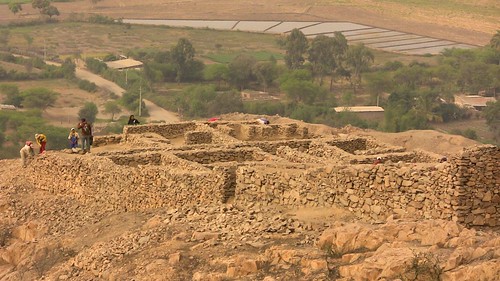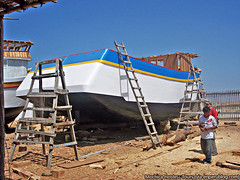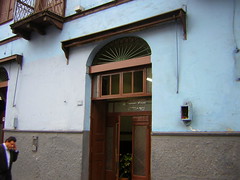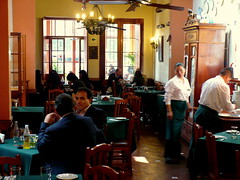Salineras de Maras – “Inca Salt Pans”
It was getting late. The sun had just dipped behind the mountains that tower over the Urubamba valley and the town of the same name. The salt pans outside the town of Maras, some way above Urubamba, were just within a reasonable distance to travel. So with no plans to come back to Urubamba any time soon, it was worth a shot to reach them.
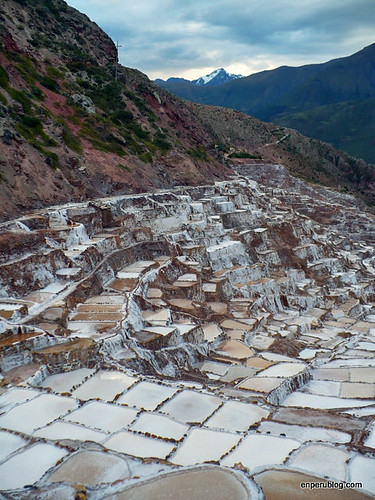
Salineras de Maras
There were still a couple of hours of sunlight left, its just that the tall mountains blocked any more direct sun light. If we were on the coast, there would still have been a hour or so until “sun set”. This problem should have been solved by venturing up and out of the valley onto higher ground, but winds, far cooler up here that down below, had brought in some clouds.
We had found a taxi driver willing to take us up here for S/.40, or about $13. Apparently tourists are willing to pay S/.120 for this one and a half hour taxi “tour” to Maras and Moray. When we were offered that price by a group of taxi drivers we just laughed at them and walked off. Minutes later, two of them caught up with us with the offer of a huge discount… S/.100. Then S/.80 minimum. As anyone who has visited Peru or Latin America knows, cheating customers is not a source of shame or embarrassment and people aren’t shy about doing it, or being found out. They asked how much we were willing to pay, I offered S/.30 – a figure I had come to by roughly calculating the distance and the price of gasoline, then factoring in S/.15 for time. The two drivers shook their heads. “No one will take you for that much”, the said. We flagged down a taxi. We offered him the same deal but were happy to settle at S/.10 more.
Holding your hand out the of the window of the taxi as it sped along the deserted mountain road was like holding it in icy water, but as soon as we stopped moving the temperature felt survivable. Lucky too, as we only had thin chompas on.
The road approaches the salt pans from the side. They actually sit in a gully, perhaps large enough to be called a valley, that leads back down into the Urubamba valley. A saline stream once flowed through here before, in ancient times, it was captured and used for salt production. The stream was redirected to flow along channels higher up the walls of the gully and at each stage some water is let out to flow into man-made ponds that fill the rest of the gully. Once full, the water in the pond (or pan) is allowed to naturally evaporate leaving salt crystals that can be collected. The process is then repeated.
Local people from Maras own the ponds. Some have been in the same family, passed down from generation to generation for as long as anyone can remember. They are formed into a cooperative and sell the salt together, but each family keeps the takings from their salt pan.
They also charge tourists who visit S/.5 for entry to the site, something you can’t blame them for. Not only is it a spectacular place to visit, but the work that goes on here is back-breaking and every penny they make on visits is a penny of salt they don’t have to produce!
At towards the source of the river is the entrance and a collection of buildings used by the producers. It also has a few lookout points and varying heights that are great for us visitors. Best of all, salt is packaged there and sold there to visitors. Most are foreigners with flights to catch, so are sold small packets of just 100g or 200g for souvenirs. Me, I bought about a kilo to take back to Lima. The woman I bought it from was clearly pleased with, I can only assume, the substantial profit she made. I got a good deal too – natural and tasty Andean salt at half the price of what is sold in the supermarket.
Photos –






